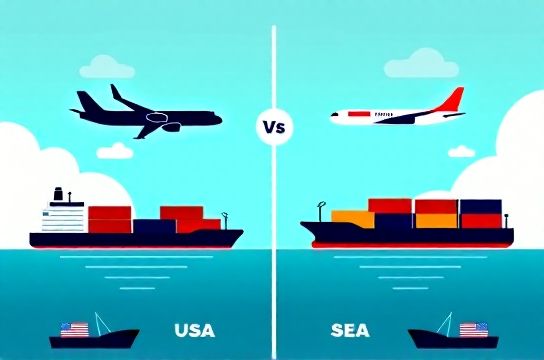Choosing Between Air and Sea Shipping from China
- 时间:
- 浏览:22
- 来源:OrientDeck
So, you're importing goods from China—awesome move! But now comes the big question: air freight or sea freight? Both have their perks, and the right choice can save you time, money, and a ton of stress. Let’s break it down in plain English, with real numbers, so you can make a smart decision.

Air vs Sea: The Big Picture
Think of air shipping like taking a sports car—fast, reliable, but expensive. Sea shipping? That’s your cargo truck—slower, way cheaper for bulky stuff, and perfect for large volumes.
When to Choose Air Freight
- You need your goods fast (within 5–8 days)
- Your cargo is high-value or lightweight (like electronics or fashion items)
- You’re shipping urgent replacements or samples
When to Go with Sea Freight
- You’re moving large volumes (think pallets or full containers)
- Your budget is tight and cost matters more than speed
- Your products are low-value per kg (furniture, machinery, etc.)
Cost & Time Comparison (China to USA)
Let’s look at a real-world example: shipping 1,000 kg of goods from Shanghai to Los Angeles.
| Shipping Method | Transit Time | Cost (USD) | Best For |
|---|---|---|---|
| Air Freight | 5–8 days | $4,500–$6,000 | Urgent, high-value goods |
| Sea Freight (LCL) | 25–35 days | $1,200–$1,800 | Medium shipments, cost-sensitive |
| Sea Freight (FCL - 20ft container) | 25–35 days | $2,500–$3,500 | Full container loads, bulk items |
As you can see, air freight costs about 3–4x more, but cuts transit time by over 70%. If you’re launching a product and timing is everything, that speed might be worth every penny.
Hidden Factors You Should Know
- Customs delays: Air shipments often clear faster due to stricter pre-arrival checks.
- Carbon footprint: Sea freight emits up to 95% less CO₂ per kg—better for the planet.
- Flexibility: Air routes are more frequent, great for last-minute changes.
Pro Tips for Smart Shipping
- Combine methods: Use air for urgent items, sea for bulk. Many importers do this!
- Negotiate rates: Volume = power. Even LCL shippers can get discounts with consistent volume.
- Watch fuel surcharges: These can spike air costs during peak seasons (hello, holiday rush).
The Bottom Line
If speed is king, go air. If savings are your game, sea wins. Most successful importers use both—strategically. Match your shipping method to your business rhythm, not just price tags.
Still unsure? Start with a small test shipment via both methods. Real-world experience beats any guide!